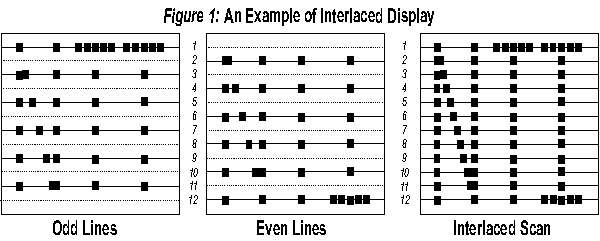I remember reading somewhere that this is a HDTV CRT TV with support up to 1080p but without HDMI, but with Component.
Whoever is quoting this is pulling a real fast one.
I have explained this before, buy let me do it again.
First let us understand Progressive scanning. How does a film show a motion? It does this by shooting a series of still pictures that have small changes in the players physical state. For example, if a man is walking, his body movement is captured by a series of still pictures that capture the various positions of his legs, arms and other parts of his body. Each of this still picture is a frame. These frames are then projected at the rate of 24 frames per second (fps) on to a screen. The human eye perceives this as motion. Actually the human eye can perceive motion at 16 frames a second, but 24fps was adopted for various historical reasons when the motion picture camera was invented and accepted by the producers.
Coming to a CRT, it is first of all an analogue device. In all CRT monitors, the image is painted on the screen by an electron beam that scans from one side of the display to the other drawing thin lines. This scan is used to display the transitions in color, intensity and pattern, and each complete pass of the electron gun is called a FIELD. Analogue TV uses a process that relies on the brain's ability to integrate gradual transitions in pattern that the eye sees as the image is painted on the screen. Each picture or frame on a television screen is composed of 525 lines, numbered from 1 to 525. During the first phase of screen drawing, even-numbered lines are drawn - 2,4,6,8 and so on. During the next phase, the odd lines are drawn 1,3,5,7 and so on. The eye integrates the two images to create a single image as shown in the image below. The fields are said to be interleaved together or interlaced. A frame or complete picture consists of two fields.

Thus a CRT can never display a Progressively scanned image or a full frame. It breaks it down into two fields and then scans the fields alternatively on the screen. Secondly, a CRT has a max of 525 lines. So the max resolution it can display is 480 in interleaved format (480i).
Unless a manufacturer has changed the very concept of a CRT or is referring to a rear projection TV, I don't understand how you can display anything more than 480i on a CRT.
Cheers


